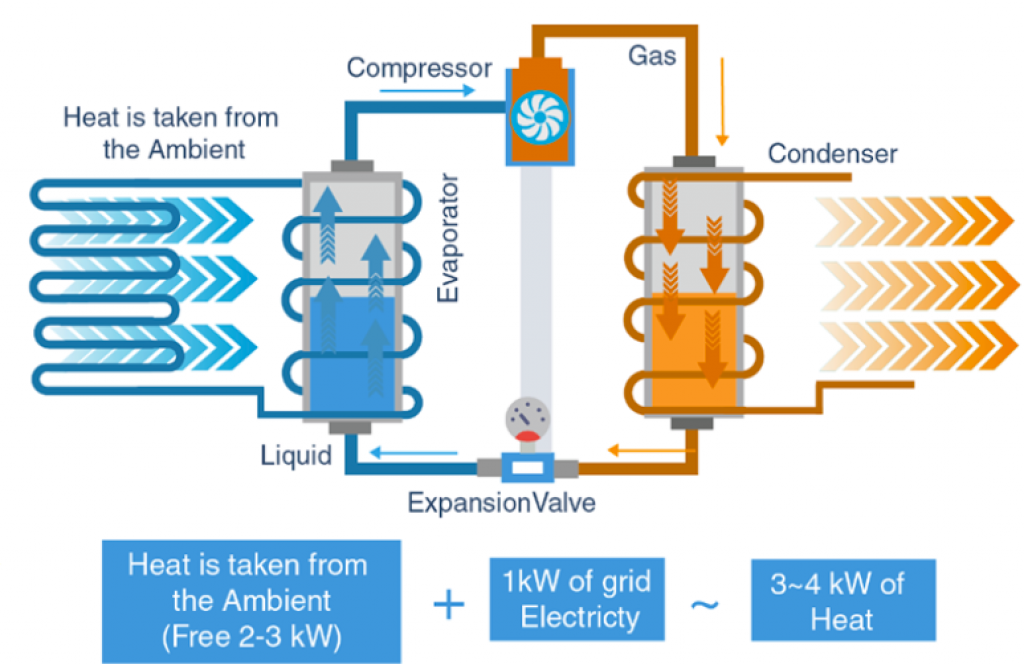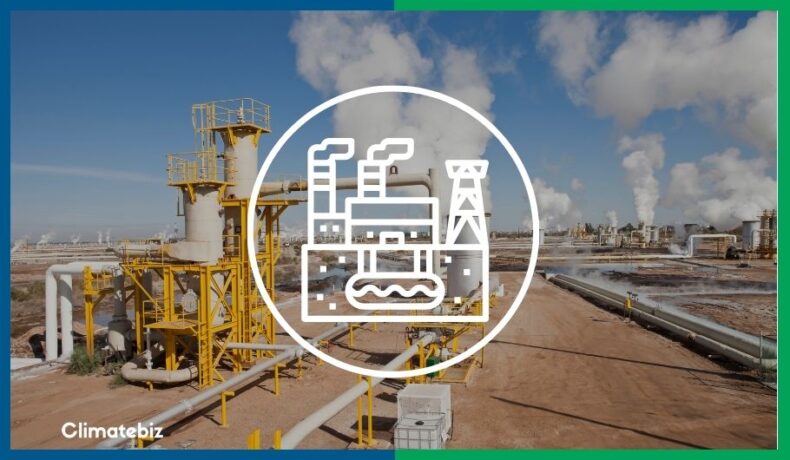Geothermal energy is a relatively new green technology. Get comfortable and prepare to learn a few interesting insights as we explore 9 disadvantages of geothermal energy.
As the global population numbers continue to rise, higher demand for energy is needed to keep modern technologies running.
Keeping us going is pretty demanding, huh?
This high demand can’t always be met in a way that is sustainable. So experts and scientists have explored alternative, cleaner sources of energy to minimize our contribution to climate change.
One of these resources is geothermal energy. Although often seen as a better choice for the planet, it does come with a few downsides.
Follow us as we explore the disadvantages of geothermal energy many out there may not be familiar with.
Table of Contents
Limited Suitable Locations
Whether you’re thinking of using geothermal energy on a smaller scale for your home or considering the energy resource for large-scale industrial use, having a suitable location for the technological requirements is a make-or-break factor.
Certain types of geothermal energy systems required suitable locations. Suitable locations specifically refer to suitable area size (and depth) and seasonal variations. Disadvantages of geothermal energy regarding suitability include:
- The availability of a large ground area on a property for installing system technology.
- Suitable soil types and structures present for underground system installations (for example: sandy soils can dry out quite easily and cause problems).
- Deep ground area available for drilling and installing system technologies.
- Large water bodies(groundwater, springs and aquifers) available for specific system designs.
- Good quality (chemistry) water bodies available for geothermal system parts.
- Seasonal temperature variations which change the soil temperatures and strain certain geothermal energy systems.
Whew! That’s a rather long list, wouldn’t you say?
System Limitations For Specific Application
Suitable technologies applied for geothermal energy are important to have if you want a sustainable source of heat or electrical energy. The technology of certain geothermal systems may be limited for the intended use. In other words, the system technology you may need isn’t always suitable for the type of use in mind.
Ok, we’re well aware that technologies have their limitations, but in what way would it not be suitable?
Well, it pretty much boils down to the compatibility of the type of system with the needs on the other end.
For example, if you needed a consistent (or sustainable) source of geothermal energy for heating and cAN only install a groundwater-dependent system, you would most likely run into problems in the long term.
This is because groundwater levels move up and down quite often, making it risky to rely on for long-term stability.
Costly Installation Equipment And Slower Payback Times
Installing the specific equipment needed for a geothermal energy system is quite a pricey ordeal!
These set-ups need a pretty big initial capital investment to cover all the infrastructure (the parts) and a good quality installation.
Basically, you need to cough up some good cash to get things started. Once the system is up and running it should become worthwhile, but the payback will take a few years to cover initial losses.
This high cost can play a big role in the risk of investing in this type of renewable energy resource, as situations of financial and environmental stability change over the years.
The tug-of-war between risk and reward is a factor where only time will tell whether it does pay off in the long term or not.
Dependence On Electrical Energy
Although geothermal energy does come from the earth, the heat energy simply can’t make its way up from the ground on its own. This means that a form of pump technology must be used, and for that to happen, the pump requires electricity.
Yep, seems a little confusing to use power to generate power, doesn’t it?
Research shows that the pumping system uses about 1 kilowatt of electrical energy to get out around 4 kilowatts of thermal energy (or heat energy), making it profitable to pump up.
So the concept seems to make more sense now! However, it’s still important to remember that using energy that negatively impacts the planet to generate green energy isn’t exactly ideal. So, unfortunately, it’s still a disadvantage of geothermal power systems even if it’s small.

Source: Aspiration Energy
Direct Environmental Impacts
Like any system that interacts with the environment directly – be it the use of resources, or placing technology into the ground- it will influence the surrounding environment.
Thankfully, geothermal energy is a lot less impactful on our precious planet compared to other technologies – like the burning of fossil fuels!
In saying that, it’s important that we recognize that there will still be impacts during installation and possibly while running the system too.
Time to delve a little deeper and see what the major direct environmental impacts could be:
| Potential impacts during installation | Potential impacts during operation |
| Surface disturbances (so, changes in soil structure and rocks) when drilling or digging for installation. This can change the stability of the land and affect the quality of the soil for important microbial biodiversity. | Leaking chemicals from the pipe fluid systems could cause polluted soils and polluted groundwater Lowering of groundwater levels can change the quality of underground water reservoirs (aquifers). It can also alter natural water heat and steam production. |
Emissions
Emissions! A hot topic in climate change and unfortunately, one of the disadvantages of geothermal energy.
This will most certainly come as a surprise to most of you! This is a renewable energy source after all!
On the one hand, geothermal energy reduces greenhouse gas emissions a lot more than other energy sources. On the other, these systems are still guilty of releasing other emissions.
This usually happens in systems that use steam or a hot water source, and those on a larger scale (such as a factory or plant).
The most problematic emission is thermal pollution. In fact, studies have shown that some operations release over 6 times more heat and over 5 times more water vapor than found in a coal plant.
Scary, right!
Mineral Build Up And Scaling Issues
Have you ever seen little white particles building up in your kettle? Or opened a tap that spews white pieces before the water comes out? That is most likely because of scaling.
Scaling happens when water has a high level of specific minerals, usually pretty harsh ones like calcium carbonate. It can be a good thing when it builds up and basically “layers” the inside of pipes. But as the saying goes – all good things in moderation!
Pipes carrying hot water are typically prone to scaling, and minerals build up to a point that becomes problematic. In geothermal energy systems, scaling can cause valves to leak and blocked flow (sometimes even bursting – eek!).
Geological Changes And Seismic Disturbances
Certain geothermal energy systems involve drilling and pumping of fluids into fractured underground rocks. This helps retrieve heat energy for power production.
Unfortunately, this fracturing and changing of the underground structures can lead to some pretty serious instability.
Think of it this way – when you crack a plate, the structure of the plate becomes unstable. Chances are the plate will break at some point when you try and place food on it. This is exactly what happens when the ground beneath us becomes unstable, except that the consequence might be tremors, earthquakes, or other unsafe environments.
A pretty intense disadvantage of geothermal energy to keep in mind!
Higher Hidden Life Cycle Impacts
When we refer to the life cycle of a system, we refer to the burdens and benefits from cradle-to-grave. This means accounting from the stage where raw materials are processed to the stage when the system is finally disposed of.
As you can imagine, this includes a lot of analysis! It may seem over-the-top, but it’s a super accurate way of determining the actual impacts a system has!
The life cycle analysis of geothermal energy shows it may be more impactful over its complete life span than once thought.
In fact, studies show that the production of system parts, installation, and maintenance services are responsible for many greenhouse gas emissions!
What does this tell us? It tells us that human and environmental health is actually impacted over the life span of this energy system, and not always in a good way!
Final Thoughts
Geothermal energy definitely is a great source of renewable energy. Much greener than fossil fuel resources, that’s for sure! Yet as with any technology, it’s important to have a balanced view of the good, the bad, and the ugly that come with it.
What’s pretty eye-opening when looking at the disadvantages of geothermal energy, is the impacts potentially being much greater than one thinks – truly dipping its toes far and wide into both human and environmental health.
The real take-home message here becomes clear:
No energy resource will ever be “disadvantage-free” but what really counts is its overall impact on the fight against climate change and contribution to a sustainable planet.
Pop a comment below if you have any questions for us, we would love to help where we can!

